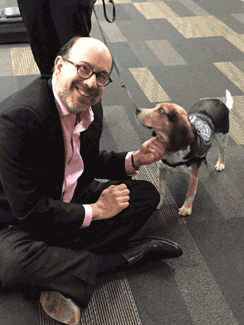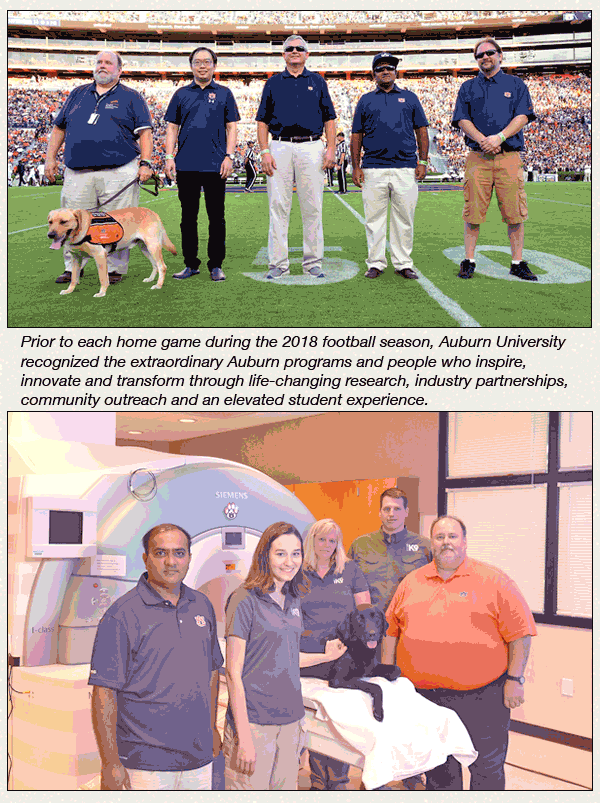|
We now know
that new rules from ICAO have forced change to air cargo as 100% industry
screening went into effect June 30.
Simply put, these ICAO international air
transportation standards mandate that all-cargo aircraft flights receive
the same level of security screening and scrutiny that cargo shipments
on passenger fights do.
So the shorthand is that as July unfolds,
stakeholders in some cases are stepping up to a new reality.
Expect air cargo webinars and discussion
groups in plenty on this topic.
Attention is drawn to a webinar later this
month on July 21 put up by The Airforwarders Association. For more click
here.
 Everybody’s
Best Friend Everybody’s
Best Friend
At some point (or maybe right away) when
the question is security detection one aspect of the conversation inevitably
goes to the dogs.
In Detection Dogs Rule
If there is one truth in air cargo security
that has remained supreme and unchallenged and actually untouched longer
than anything that has been claimed or accomplished, it’s that today
in 2021 mankind has not yet come up with a better way to insure safety
aloft than employing bomb and contraband sniffing dogs.
Air cargo leaders concur.
“A properly imprinted and trained
canine remains the most effective and operationally efficient tool for
cargo screening,” says Brandon Fried, Execuitve Director, Airforwarders
Association (pictured here with a TSA friend).
But it goes beyond just industry promoters
and marketing schemes.
“After $19 billion spent over six
years, the USA Pentagon realizes the best bomb detector is a dog,”
wrote Dan Nosowitz in Popular Science Magazine.
Nosing Out Humans
As example, although humans cannot smell
TNT powder, a dog can.
And what about those Vapor Wake dogs, trained
at the excellent Auburn University Canine Performance Sciences School
that you might observe occasionally in airport terminals and other applications.
Those magnificent animals are trained to
work anywhere tracking the invisible vapor trails the human stain leaves
behind. By tracking the air in an enclosed or even open space, a Vapor
Wake Dog can alert to the presence of a human bomb.
Whiffing Through Days Of Futures
Past
Dogs for thousands of years have had this
talent that, as mentioned at the top, so far has gone unchallenged.
But a huge investment of upwards of USD$40,000
is required to train and the numbers are limited to the supply of pure
breds with the ability to do detection duty at an airport, Army base or
mall near you.
Additionally as we have experienced, dogs
have one fatal flaw that applies to every breed:
They simply do not live long enough!
Also like us humans, dogs can sometimes
make mistakes, or occasionally need a nap.
 |
Auburn Goes To The Dogs
The upshot of all of this here is that an
educational institution, Auburn University is deep dish into providing
a baseline treasure of knowledge and information for anyone considering
the move forward to meet advanced security all along the logistics chain.
Some of the most experienced and probably
the best non-biased information and best practices resource in the world
of dogs can be found at Auburn University’s pioneering, collaborative
research, which for more than 16 years has been enhancing the capabilities
of dogs’ detection of hazardous substances to protect the world.
The Auburn Dog™
The Auburn Dog™ is internationally
recognized as being of the highest quality and capability for the interdiction
of chemical, biological, and explosive threats in airports, train stations,
sports arenas, and on city streets.
What makes the Auburn Dog™ stand out
among detector dogs?
“It’s the focus of the university’s
multidisciplinary team in scientific investigation and continual improvement
of The Auburn Dog™, said Paul Waggoner, Canine Performance Sciences
program co-director who invented and patented the process.
“Auburn is using its wealth of research
talent and capability across campus to provide a blueprint to breed and
train the best detector dogs in the world.”
 |
Dogs Olfactory Receptors Nose Out
Humans
“Dogs are inherently great detectors
thanks to 300 million olfactory receptors, compared to only six million
for humans, and the significance of odor in guiding their behavior.
“We want to maximize the level of
protection provided by the dogs’ remarkable sensory capabilities,”
Mr. Waggoner said.
Dogs Get MRI Before Training
One example of a university-wide collaboration
is the use of MRI scanning to noninvasively study dogs’ brain activity
to possibly pinpoint—prior to expensive training—whether the
dogs can become top detectors.
Jeff Katz, psychology professor in the College
of Liberal Arts, is working with Gopi Deshpande, electrical engineering
professor in the Samuel Ginn College of Engineering, and Tom Denney, director
of the MRI Research Center, to identify how canine behavior and cognitive
abilities are related to brain activity in dogs in the program.
“One of the things we're very much
interested in is developing an endophenotype, which is basically looking
at behavior and looking at the brains in these dogs to see if we can find
predictors early on in their training that will tell us which ones will
be a premier dog, a successful dog.
“And, what dog is not going to be,”
Katz said. “This is helpful in identifying not only the best dogs,
but also as a cost-saving measure since training these dogs costs thousands
of dollars.”
One Tough Cop
 Thoughts
drift back to conversations with our old friend Harald Zielinski, retired
now, who once upon a time was the top security officer for Lufthansa Cargo.
His responsibilities included overseeing LH’s critical headquarters
system hub in Frankfurt. Thoughts
drift back to conversations with our old friend Harald Zielinski, retired
now, who once upon a time was the top security officer for Lufthansa Cargo.
His responsibilities included overseeing LH’s critical headquarters
system hub in Frankfurt.
Harald, as the son of a street cop in Frankfurt,
where both father and son served with the local police department there,
combined the practical realities of his time with knowledge gained.
“People are not stupid or lazy; they
are just busy keeping things moving,” Harald would always preface
his conversation.
“The industry should speak with one
voice in fighting for a worldwide, harmonized security regime,”
Harald said in 2010.
Once, while supposing what the ideal environment
would be before checking out cargo prior to flight, Harald said:
“Never mind using just dogs and other
similar methods to check out freight.
“What air cargo needs is a giant sniffer
that can surround and detect entire containers of freight in one felled
swoop.”
Harald, the dreamer and doer saw advanced
security as an emerging reality; we detected his impatience to get 100%
secure air cargo right, period.
In 2021, Harald is retired, living somewhere
in Florida and the ICAO mandate feels a bit as though it arrived at the
speed of baby steps 11 years later.
And that giant sniffer machine?
Well, today there are several Explosive Detection Systems on the market,
from Smiths Systems, Rapiscan and others.
But yet today still the world’s most
effective mobile detection system remains the humble dog.
Just make sure with the care and feeding
of air cargo’s best friend in 2021.
Geoffrey
|




